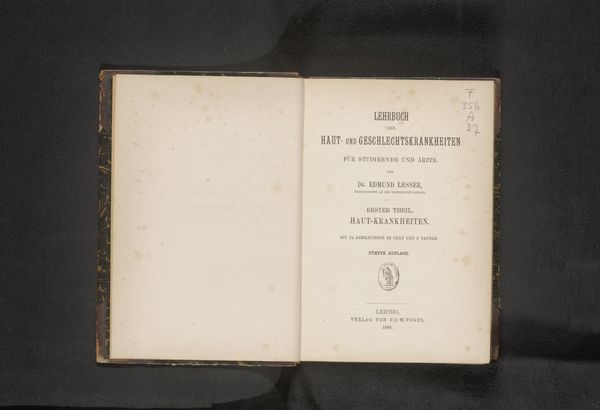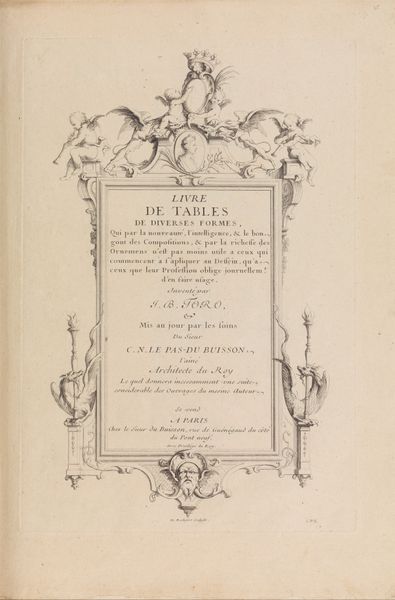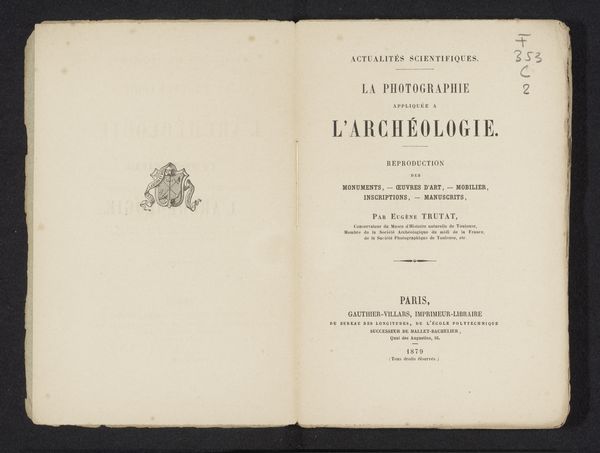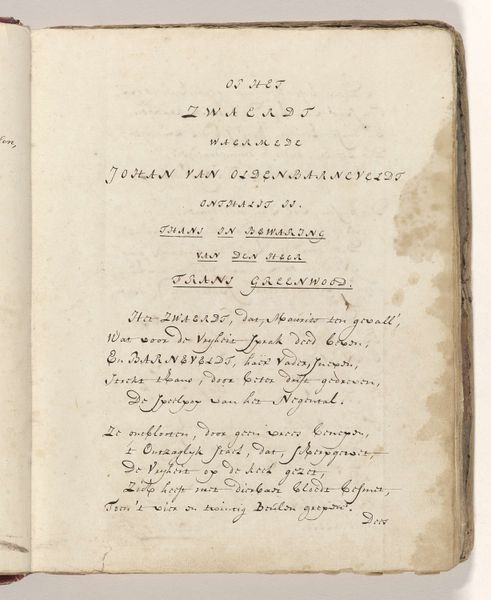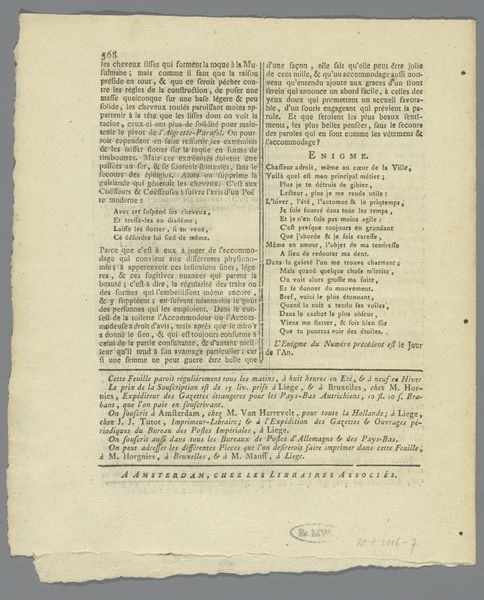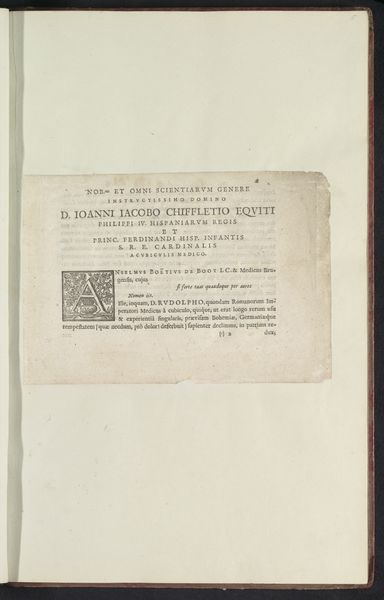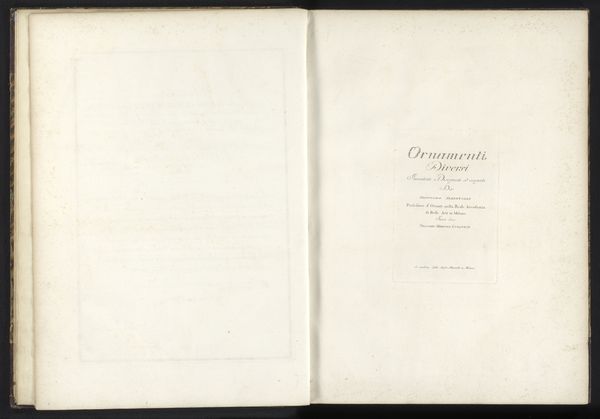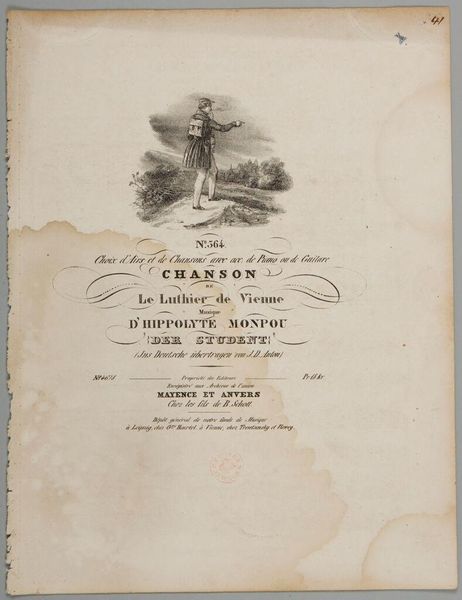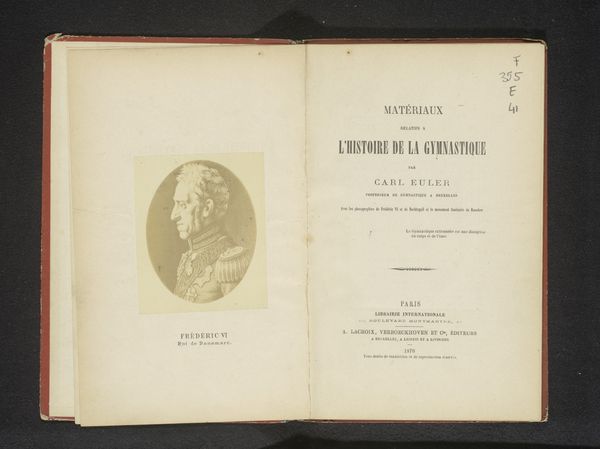
The cabinet-maker and upholsterer's drawing-book, in three parts 1793 - 1794
0:00
0:00
drawing, print, paper, typography
#
portrait
#
drawing
#
aged paper
#
hand written
#
hand-lettering
#
neoclassicism
# print
#
paper
#
tea stained
#
typography
#
hand-written
#
fading type
#
thick font
#
handwritten font
#
decorative-art
#
watercolor
#
historical font
Dimensions: 2 volumes, illustrations, height: 10 5/8 in. (27 cm)
Copyright: Public Domain
Curator: Immediately, the effect is one of immense fragility and quiet dignity. Editor: Indeed. We’re looking at the title page from "The Cabinet-Maker and Upholsterer's Drawing-Book, in Three Parts," published by Thomas Sheraton in London between 1793 and 1794. A key document reflecting the late 18th century design and aesthetics. Curator: The typography certainly communicates that sense of Neoclassical restraint and order. Notice the clean, elegant lettering, and how the composition is so carefully balanced. However, the aging of the paper gives it a profound depth, whispering of passing time and memory. Editor: Precisely! The text itself—"drawing-book"—serves almost as an incantation. It's as if Sheraton understood that this wasn’t just about providing instructions, but also embedding a certain refined sensibility in British cultural memory. I mean look at it! This hand-lettering evokes not just furniture, but also ideals of craftsmanship and taste. Curator: You're right. And what’s fascinating is that the book itself became a powerful tool for disseminating those ideals. Its influence shaped design trends and material culture far beyond Sheraton’s own workshop, particularly among the emergent middle classes. Editor: See, there’s even a handwritten inscription at the top “William Frances with best wishes to W. Banting” from 1812. Isn’t that fascinating? A gift; proof of its continued relevance years after initial publication. What sort of world did the readers conjure within the book's pages? It served as a symbol of taste and ambition. Curator: That inscribed year hints that Neoclassical aesthetics continued far beyond the official historical designation; something clearly sustained not just by the nobility but individuals far removed from Court. These objects carry on longer and further than any sovereign imagines. Editor: Thinking of it in those terms – who it circulated amongst – only makes it even more remarkable that it has endured through many lives! A truly exceptional piece.
Comments
No comments
Be the first to comment and join the conversation on the ultimate creative platform.
